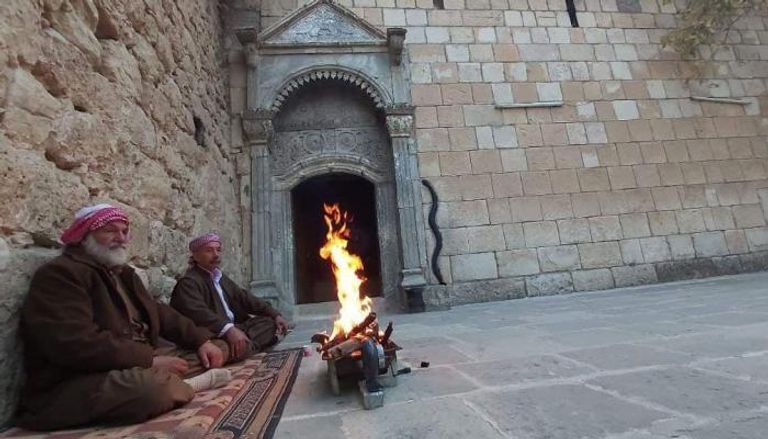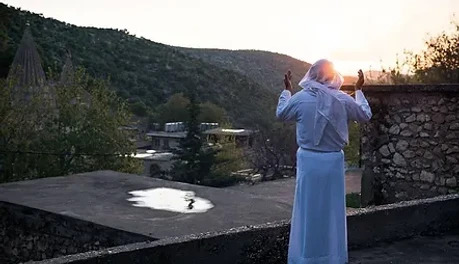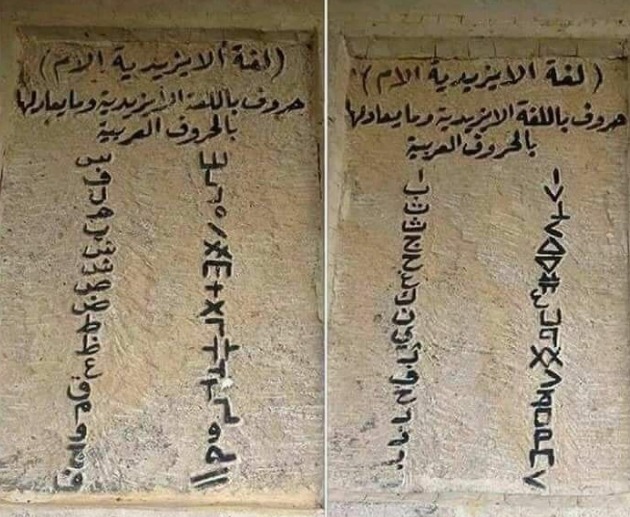Who Are The Ezidis?
Ezidis are Ethno Religious and Indigenous people as earliest known inhabitants of
Mesopotamia region, who have been part of human civilization for thousands of years.
Ezidis practice their own culture, language and philosophy of life descending from
ancient Mesopotamian civilizations, which has truly and strongly written by history
thousands of years old which is also characterised by assimilation, forced conversion,
massacre, oppression and Genocide.
Ezidis mainly live in Sinjar and the northern region of Iraq, the second biggest Ezidi
community is in Germany as biggest Ezidi diaspora. However, smaller communities are
present all over the world as a result of discrimination throughout history.
Origin of the name:
The word Ezidi was found on a clay figure dating back to Sumerian and Babylonian
eras and is derived from Khuday Ez Dam, meaning I was created by God. Even though
we are called Yazidis (English) and Yezidis (French), the original and correct version is
Ezidis, as said in Ezidi language and as witnessed by ancient and millenary artifacts.

Culture and Religion:
Ezidi religion is one of the oldest monotheistic religions and it is
considered to be pre-Abrahamic. In Lalish – a small mountain village in Northern Iraq –
there is the holiest temple of Ezidi faith. The temple belongs to ancient times and many
archaeologists and historians agree that it was part of Sumerian and other ancient
Mesopotamian civilizations.
As one of the most ancient ethnic and religious groups, Ezidis have developed
a strong sense of identity defined by millenary traditions. One of its traditions
is Serê Sal, the Ezidi New Year, which falls in spring, on the first Wednesday
of April (Assyrian calendar). Ezidi new year is also consedreid as day of
tolerance. During the Serê Sal, there is some lamentation by Ezidi women and
men in the cemeteries, to the accompaniment of the music of the Qewals. But,
in general, the Serê Sal is characterized by joyous events: the music of def
(drum) and Shebab (shawm), communal dancing, lightning candles, meals
and the decorating of eggs.
One of the most important traditions in the community is the Cejna Cemaiya,
or Feast of the Assembly, that is the annual seven-day pilgrimage to the holy
temple of Lalish. Ezidis also fast during the three shortest days of the year,
worshiping God to give them longer days.


The Ezidi language:
Despite of discrimination, marginalization, attempts at annihilation, and neglectance and
non recognition of Ezidi language in Iraq, Ezidis perceived their own language that its
first traces date back to the Sumerian era in Mesopotamia. Ezidi language is officially
listed and recognised in Armenia. That is clear in the European Charter for Regional or
Minority Languages (ETS No. 148) “Article 3, paragraph 1, of the Charter, the Republic
of Armenia declares that within the meaning of the European Charter for Regional or
Minority Languages, minority languages in the Republic of Armenia are Assyrian, Ezidi,
Greek, Russian and Kurdish languages.” In Germany, there is a course on learning the
Ezidi language and its distinguished script or alphabet, we can find scientific proofs
written on rocks on the walls of Lalish and other Ezidi temples.
